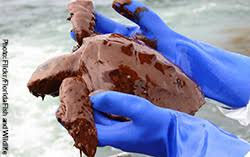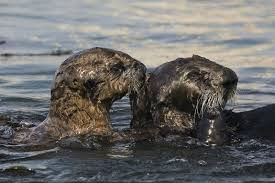Why Oil Spills are bad news?
- Danielle Klaff
- May 3, 2019
- 4 min read
Updated: May 28, 2019

California beach oil spill
On Tuesday 19 May 2015, the nine-mile coast of Santa Barbara, California coastline was hit by a massive oil spill.
Officials now said that about 105,000 gallons of crude oil spilt into Refugio State Beach, up from five times the original predictions. It took months before the beach was restored, U.S. Coast Guard Capt. Jennifer Williams said at a news conference.
The pipe was carrying about 2,000 barrels of oil an hour, according to Plains All American, the company who owns the pipeline.

The company says it “deeply regrets” the spill. The oil transportation company has been fined at least 10 times for oil spill violations in four other states between 2004 and 2007, according to reports. The Houston-based company has been deemed the “worst violators” by the U.S. Pipeline and Hazardous Materials Administration.
Investigators are uncertain as to what caused the devastating spill, but rescuers are working around the clock to get a handle on the environmental disaster. So far, carcasses of petroleum-soaked pelicans have been found, along with live oil-covered pelicans, sea lions, and elephant seals.

BP Oil spill in Gulf of Mexico in June 2010
On 20 April 2010, the Deepwater Horizon oil spill began, also known as the BP-owned Transocean-operated Macondo Prospect in the Gulf of Mexico.
Following the explosion and sinking of the Deepwater Horizon oil rig, a sea-floor oil gusher is still flowing!
Eleven people were never found, and it is considered the largest accidental marine oil spill in the history of the petroleum industry, an estimated 8% to 31% larger in volume than the previously largest, the Ixtoc I oil spill.

The US Government estimated the total discharge at 4.9 million barrels (210 million US gal; 780,000 m3). After several failed efforts to contain the flow, the well was declared sealed on 19 September 2010. Some reports indicate the well site continues to leak.
A massive response ensued to protect beaches, wetlands and estuaries from the spreading oil utilizing skimmer ships, floating booms, controlled burns and 1.84 million US gallons (7,000 m3) of Corexit oil dispersant.
Due to the months-long spill, along with adverse effects from the response and cleanup activities, extensive damage to marine and wildlife habitats and fishing and tourism industries was reported.
Shell drilling in the Arctic
The Obama administration has approved Shell’s plans to begin oil extraction off the Alaskan coast this summer. Federal scientists estimate the Arctic region contains up to 15 billion barrels of oil, and Shell has long fought to drill in the icy waters of the Chukchi Sea.
Environmentalists warn Arctic drilling will pose a risk to local wildlife and exacerbate climate change. They fear that a drilling accident in the icy Arctic Ocean waters could prove far more devastating than the deadly 2010 Gulf of Mexico spill since any rescue operations could be delayed for months by harsh weather conditions

Here are Greenpeace’s 10 reasons why drilling for oil in the Arctic is a bad idea –
1. It’s extremely dangerous. The Arctic environment is one of the harshest in the world, and everything you do there is more complicated than anywhere else.
2. Our climate can’t afford it. As the impacts of climate change become more visible and the danger becomes greater, drilling for and burning more fossil fuels is pretty much the last thing we should be doing, especially in somewhere as fragile and untouched as the Arctic.
3. Relief wells are harder to drill. In the case of a blowout – like happened with Deepwater Horizon – a relief well must be drilled, but the arrival of winter ice cuts the drilling season short. This means oil could be left gushing unstopped for up to two years.

4. Oil recovery is near impossible in ice. Standard spill technology like booms become useless in thick ice. According to a senior official at a Canadian firm specializing in oil spill response, “there is really no solution or method today that we’re aware of that can actually recover [spilt] oil from the Arctic.”
5. There isn’t nearly enough oil spill response capacity. The Arctic is remote — it has a small population, and few facilities available. About 6,000 ships were used to skim oil in the Deepwater Horizon disaster. Cairn Energy had a mere 14 ships available in the Baffin Bay in Greenland; Shell has named only nine in their oil spill response plan for the Chukchi Sea.
6. Nature is even less capable of absorbing oil there than in lower latitudes. Lack of sunlight in winter and cold weather means that oil will take more time to break down. Oil will stay locked under the sea ice. More than 20 years after the Exxon Valdez disaster in Alaska, oil can still be found in the environment of Prince William Sound.

7. The local wildlife is very vulnerable to oil. Many bird species migrate to the Arctic in summer, as well as whales and seals. Polar bears and Arctic foxes, which rely heavily on marine and coastal resources to live, will be directly impacted by industrialization.
8. It’s hugely expensive – because of the extreme nature of operating on the frontiers of the world’s last great wilderness, looking for Arctic oil is incredibly expensive. In the last two years Cairn Energy has spent over a billion dollars to drill a handful of wells – and still found no oil.
9. A Three year fix – the US Geological Survey estimates the Arctic could hold up to 90 billion barrels of oil. This sounds a lot, but that would only satisfy three years of the world’s oil demand. These giant, rusting rigs with their inadequate oil spill response plans are risking the future of the Arctic for three years worth of oil. Surely it’s not worth taking such a risk?
10. We don’t really need to. Carmakers are perfectly capable of making only fuel-efficient vehicles. If companies like Volkswagen stopped blocking key efficiency laws, fuel-efficient vehicles would become the norm. This way, we would reduce our need for oil, help the planet, and save consumers some gas money.






Comments